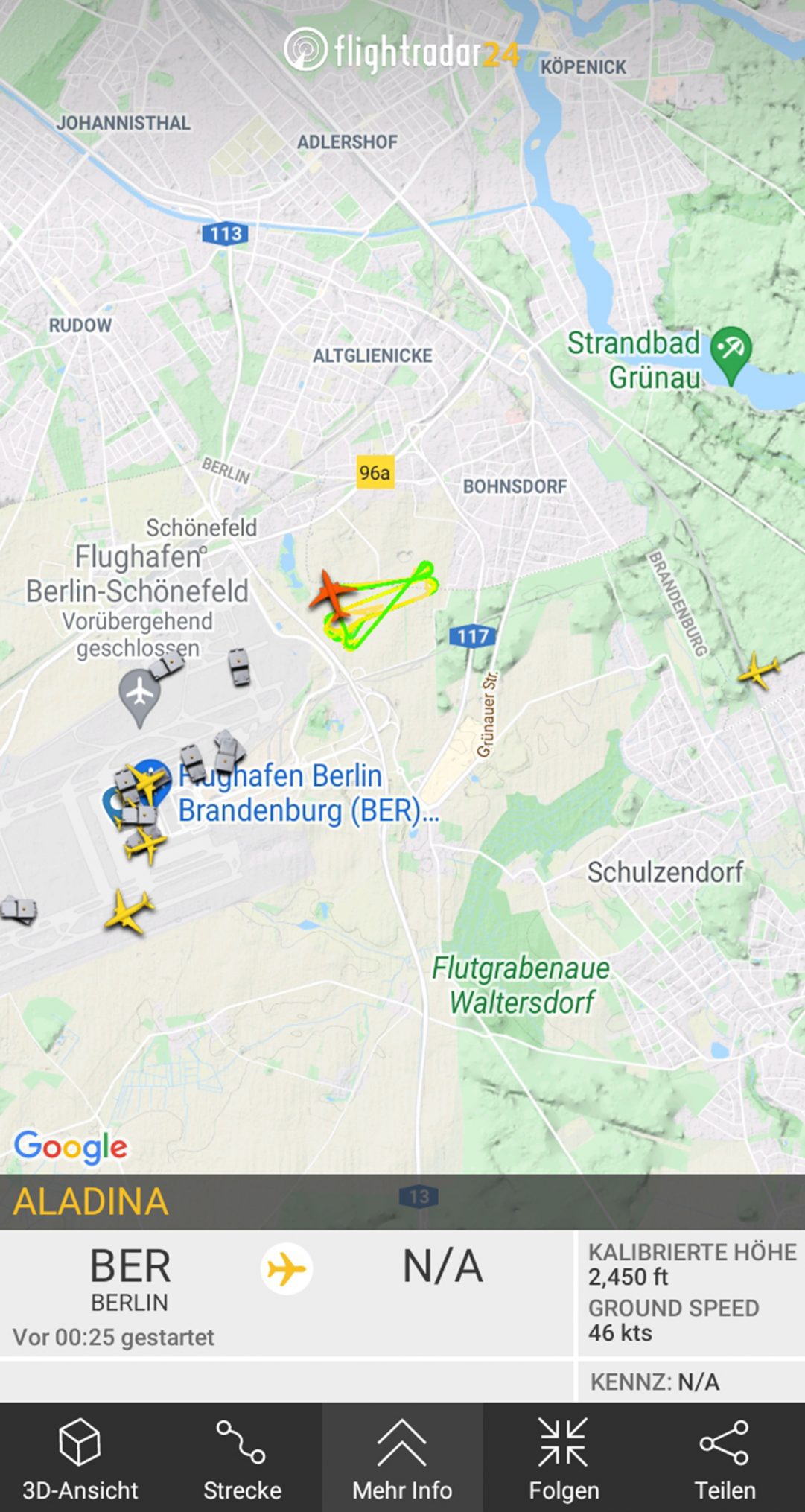Drone Measurements at Berlin Brandenburg Airport Fine dust pollution from air traffic on the ground and in the air
A model aircraft near the runway of BER Airport? The drone ALADINA (Application of Light-Weight Aircraft for Detecting In-situ Aerosol) was actually performing flights there. It is an unmanned research aircraft of the Institute of Flight Guidance of Technische Universität Braunschweig. The drone is used to investigate the distribution of fine dust. On behalf of the German Environment Agency (UBA), the project ULTRAFLEB (ultra fine dust pollution from airports in Berlin) is analysing how fine dust pollution will change as a result of the opening of the new BER airport.
For this purpose, there are long-term measurements at selected locations in the vicinity of BER Airport as well as measurements of the spatial distribution on the ground with vehicles and in the air. The data are used in models to analyze the air quality in the Berlin area.
Few particulate matter data at airports
At airfields, there is so far little information on the distribution of particulate matter with height. It is strongly dependent on meteorological conditions such as turbulent mixing, solar radiation and wind. In addition, fine dust can accumulate under temperature inversions. ALADINA offers the opportunity to gain valuable insights into this.
Safety of flights monitored

ALADINA on the Flightradar24 site. Image credits: Courtesy of Flightradar24.com
To carry out the flights, a piece of meadow was mowed as a landing site and a gravel road was prepared as a runway.
For coordination with the air traffic controllers of the German Air Traffic Control (DFS), ALADINA was equipped with a so-called transponder, which makes the device visible to air traffic controllers and other air traffic participants.
This means that ALADINA is also visible to the public on the Flightradar24 website. The exact flight area was agreed with DFS in advance, so that the drone maintains sufficient safe distance from commercial aviation.
“Operating a drone in the control zone during ongoing flight operations is a new situation. The coordination with the controllers worked out very well, and many interested residents came by to find out about the project,” reports Dipl.-Ing. Lutz Bretschneider, who was responsible for take-off and landing as well as monitoring the flights as a safety pilot.
Ultrafine dust
Ultrafine dust consists of small particles. They are smaller than 100 nanometers (= 0.1 micrometers). And thus significantly smaller than the usually considered fine dust PM10 or PM2.5, which have a maximum size of 10,000 nanometers and 2,500 nanometers, respectively. Due to their small size, ultrafine dust particles can penetrate the lungs particularly easily and even enter the bloodstream.
Project Data:
The ULTRAFLEB project (FKZ 3720 52 201 0) is funded by the German Environment Agency (UBA) and will address changes in air quality caused by the commissioning of BER Airport from November 2020 to the end of 2024. The project is being carried out jointly by several partners under the coordination of the Leibniz Institute for Tropospheric Research (TROPOS).
